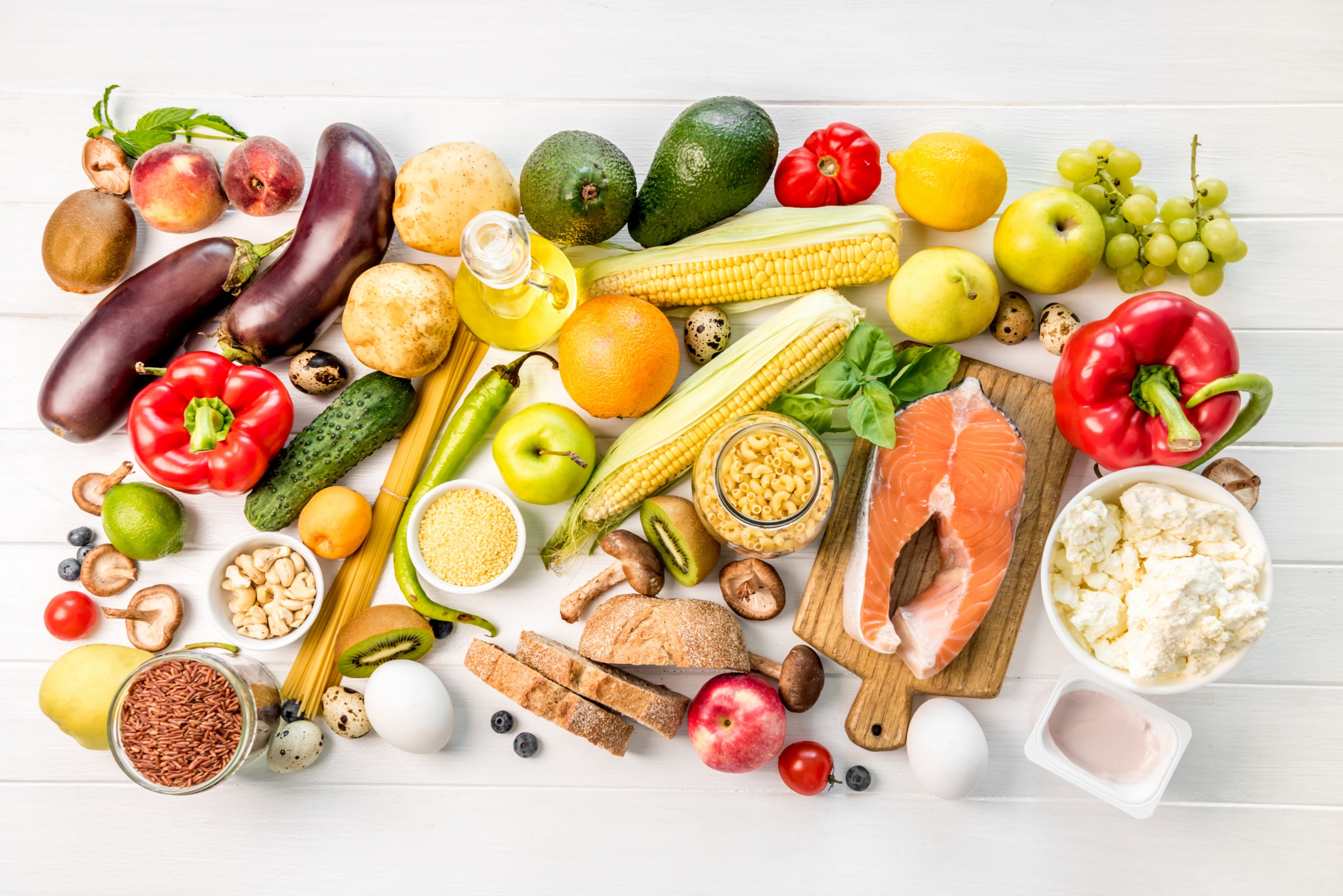In the article ‘Food Allergies: Where to Find Common Triggers’ you will find a wealth of information on the various hidden sources of common allergy triggers. Many potential allergens are used as stabilizers or are hidden sources of flavoring. SAAT treatments successfully reduce your response to food allergies as well as all the hidden components within the foods that may be triggering allergy symptoms.
If you suspect you have food allergies, you may be interested in finding these hidden sources of potential trouble. Remember, your food allergies can be eliminated through Soliman Auricular Allergy Treatment (SAAT) but in the meantime, avoidance of the allergen will be helpful in keeping your symptoms manageable.
Food Allergies: Where to Find Common Triggers
Most people have a reaction to food from time to time. Dip into salsa or spicy Indian food, and your nose starts running. Maybe you get gas from eating beans, or headaches from wine. If you’re lactose intolerant, you likely get diarrhea if you eat cheese or milk. These are food sensitivities or intolerances, and they are not caused by the immune system.
A food allergy is different. When you’re allergic to a food, your immune system reacts abnormally to that specific food. Your allergic symptoms can range from a mild skin rash or itchy eyes to a more serious, deadly reaction called anaphylaxis.
Common Food Allergy Symptoms
If you have anaphylactic (life threatening) reactions to certain foods, you probably know it. People who have had anaphylactic reactions to a food should wear a medical alert bracelet or necklace. They should always carry a syringe of epinephrine (adrenaline) and be prepared to inject it if they think they are having a food reaction.
Mild symptoms are more difficult to tie to specific foods. You may get a skin rash, hives, eczema. Perhaps you feel nauseous, get cramps, vomit or have diarrhea. Food allergies can even trigger common hay fever symptoms like a runny nose, sneezing, and itchy, watery eyes.
In highly allergic people, even tiny amounts of a food allergen (for example, 1/44,000 of a peanut kernel) can prompt an allergic reaction. Less sensitive people, however, may be able to eat small amounts of the food to which they are allergic.
To help you spot hidden food triggers, look over this list. See where they lurk in common grocery store products.
Foods That Cause Allergies
Almost any food can trigger an allergy, but these are most common ones:
- Milk (mostly in children)
- Eggs
- Peanuts
- Tree nuts (like walnuts and pecans)
- Soy
- Wheat
- Fish (mostly in adults)
- Shellfish (mostly in adults)
Avoiding the problem food is the key to controlling food allergies, but it isn’t always easy. Milk, eggs, and nuts may be hidden as ingredients in other foods. Most baked goods, like cakes and cookies, contain eggs and/or nuts. Water-packed tuna may have nonfat dry milk added in. Soybean oil may be hidden in a salad dressing. A hot dog may contain milk protein. That’s why reading food labels is very important.
However, food labels don’t tell the whole story. Natural flavors like pineapple, milk casein, or hydrolyzed soy protein may be used in microwave popcorn, for example — yet you won’t see them on the ingredient list. You’ll see words like “flavoring” or “natural flavoring.” Words like “emulsifier” or “binder” can also hide the fact that soy or egg is in the product. If you have a food allergy, it’s important to get familiar with these types of terms.
Here’s a brief overview to help you make health-smart decisions at the grocery store. While these lists are not complete, they cover the essentials. If you have questions about any product, call the manufacturer. The customer service department should be able to help — or the quality assurance officer.
Milk Allergies
A milk allergy is a reaction to milk proteins like casein. Some people cannot drink cow’s milk but are fine with sheep or goat milk. Others can’t have any type of milk. Common symptoms are severe stomach pain, diarrhea, skin hives, or difficulty breathing.
(Remember: lactose intolerance is not a milk allergy, but the inability to digest the sugar in milk (lactose). People who are lactose intolerant may suffer gastrointestinal symptoms such as bloating and gas, but won’t have the allergy symptoms above.)
If you are allergic to cow’s milk, read labels carefully. Greek-style yogurt is made with cow’s milk, but Greek yogurt is made with goat’s milk. Various forms of milk are found in products like cake mixes, instant mashed potatoes, and baked goods including pies. Milk products are also found in Indian dishes — where ghee (a form of butter) is very common.
It gets confusing: Non-dairy coffee creamers and coffee whiteners contain skim milk. Margarines claiming to be 100% corn oil may contain skim milk powder!
Foods to avoid:
- Skim milk, whole milk, malted milk, nonfat milk, powdered milk, half & half
- Condensed, dry, or evaporated milk
- Coffee creamers and coffee whiteners
- Milk from goats or other animals
- Sour cream, imitation sour cream
- Cheese, cream cheese, cottage cheese, curds, whey
- Custard, pudding, yogurt
- Chocolate, cookies, biscuits, bread, breakfast cereal
- Batter-fried foods, gravies, instant mashed potatoes
- Soy cheese, vegetarian cheese
- Soup mixes, packaged soups, canned soups
Read ingredient labels carefully for:
- Milk, pasteurized milk, milk powder, milk protein, milk solids, milk wholes
- Casein, caseinates, rennet casein
- Albumin, lactalbumin, lactic acid, lactose
- Whey, whey powder, whey protein, whey syrup
- Rennet, nougat
- Artificial butter flavor; butter, butter fat, butter oil; buttermilk; ghee
Egg Allergies
In most cases, egg allergies are mild but are caused by even tiny amounts of egg. Sometimes, it’s the egg white (albumen) that’s the problem; for other people, it’s the egg yolk. In rare cases, an egg allergy can trigger anaphylaxis.
While some products clearly list eggs or egg proteins as ingredients, others are less clear. If only tiny amounts of egg are in the product, you won’t always see it on the label.
Noodles may contain egg, but not list it as an ingredient. Processed meats, like sausages, often have egg hidden in the mix. Bagels, pretzels, and other baked goods get their shiny appearance from egg white — but it’s not mentioned on the package label.
Avoid these foods containing eggs:
- Omelettes
- Eggnog
- Mayonnaise, tartar sauce
- Meringue or meringue powder; marshmallows
- Pasta, spaghetti, macaroni, egg noodles
- Surimi (imitation seafood)
- Baking mixes and baked goods
- Breakfast cereals, pancakes, waffles, muffins
- Cake flours, cakes, cookies
- Ice cream, sherbets
- Soups, souffles
- Bologna, meat loaf, meatballs, sausages
These words indicate egg (or egg components) in a product:
- Albumen
- Lysozyme
- Lecithin
- Binder
- Coagulant
- Egg white
- Egg yolk
- Emulsifier
- Globulin
- Powdered egg
- Vitellin
Peanut Allergies
Peanut allergy is one of the most common food allergies and is the leading cause of deadly food allergy reaction. Shaking hands with someone who has handled peanuts, or even smelling peanuts, can produce an allergic reaction. For some people, the reaction is so severe that it causes fatal anaphylaxis.
Peanuts are used in a variety of processed foods like ice cream (as a flavoring), marinades, snack foods, biscuits, baked goods, and candy. Certain ethnic dishes also contain peanuts or peanut oil: African, Chinese, Indonesian, Mexican (enchilada sauce), Thai, and Vietnamese. Some flavorings are nut-based. Peanuts are also used as a thickener in prepared foods. Many roasted and fried foods (including roasted chicken) contain peanut oil.
If you have a peanut allergy, be careful with other types of nuts. Although peanuts are technically a legume (a bean) that grows underground, you may be allergic to nuts grown on trees — especially almonds, walnuts, hazelnuts, Brazil nuts, and cashews.
Avoid these foods:
- Peanuts, peanut butter
- Beer nuts, ground nuts, mixed nuts
- Cereal bars, cakes, cookies, doughnuts, granola/energy bars, muffins, pastries, baking mixes, cereals, crackers, muesli, granola, trail mix
- Ice cream, frozen desserts, frozen yogurt
- Artificial nuts — used in baked products and hot fudge sundaes
- Goobers, Nu-Nuts flavored nuts
- Mandelonas (a nut substitute derived from peanuts)
- Salads: Waldorf salad, curried chicken
- Nutella, marzipan (almond paste), chocolate, nougat (used in candies)
- Nut butters, pesto
- Dried soups
- Vegetarian burgers
- Ethnic foods: Thai, Chinese, Vietnamese, Indian, Japanese
Look for these on food labels:
- Peanut, peanut flour, peanut oil, peanut starch
- Hydrolyzed vegetable protein, plant protein, vegetable oil
Tree Nut Allergies
If you have a peanut allergy, you likely need to avoid tree nuts, too — cashews, almonds, pecans, walnuts, hazelnuts, pine nuts, Brazil nuts, Macadamias. Also, be careful with coconut, chestnut, ginkgo nuts, and lychee (lichee) nuts as they are also considered tree nuts. Like peanuts, tree nuts are dangerous because they are hidden in so many foods — even non-food products like lotions and shampoos.
Tree nuts are commonly found in:
- Baked goods: cakes, cereal bars, cookies, doughnuts, energy/granola bars, muffins, pastries
- Baking mixes, cereals, crackers, muesli
- Trail mixes
- Salad dressings, gravies, nut oils
- Ice cream, frozen desserts, frozen yogurt, sundae toppings, chocolate
- Sauces: Barbecue, pesto, Worcestershire
- Salads: Waldorf salad, curried chicken
- Spreads: Nut butter, almond paste (marzipan), cheese, chocolate nut, nougat, Nutella, Nu-Nuts
- Nut-flavored coffee and liqueurs
- Natural flavorings and extracts
- Ethnic foods: Thai, Chinese, Vietnamese, Japanese, Indian
Wheat Allergies
When you have an allergic reaction to wheat, it’s really intolerance to gluten — the protein found in wheat, rye, barley, and oats. Wheat is found in many types of baked goods and breads — from white bread to Indian naan, and is also found in rye bread. Even gluten-free bread may contain small amounts of wheat.
Gluten intolerance is associated with the disease called “gluten-sensitive enteropathy” or “celiac disease.” With celiac disease, your immune system responds abnormally to gluten. Some researchers include celiac disease as a food allergy. Technically, however, the immune response caused by celiac disease is different than the response caused by other food allergies. Symptoms of celiac disease include gas, bloating, diarrhea, weight loss, fatigue, and sometimes vomiting.
Some people with this so-called wheat allergy can tolerate oats, but be careful. Oats are often processed and stored with other grains. Wheat is also hidden in many packaged foods — sauce mixes, seasonings, condiments, sausages, ice cream, mustard, mayonnaise, even in candy. Both soy sauce and Worcestershire sauce contain wheat.
Ale, beer, bourbon and whiskey contain wheat — and so does wine!
Many medications in tablet form have a wheat binder that isn’t listed on the label. If you have a wheat allergy, you need a liquid form or one that uses potato or corn starch.
Wheat and gluten-containing products:
- White flour, all-purpose flour, whole wheat flour
- Durum wheat, semolina (refined durum)
- Grains: bran, barley, Farina, Kamut
- Cracked wheat: Bulgur, couscous, graham
- Spelt, a form of wheat
- Triticale, a wheat/rye blend
- Wheatgrass (juice or powder)
- Polenta, an Italian cornmeal dish
Processed foods that contain wheat:
- Breads, including rye breads
- Cookies, pastries, buns, cakes, muffins, pancakes
- Breakfast cereals, muesli
- Pizza, pastas, crackers
- Battered or breaded foods
- Baking powder
- Packet sauce mixes, seasonings
- Dressings and sauce
- Ice cream, pies
- Sausages
- Mustard and mayonnaise
- Canned soups
- Candy
On a food label, these words indicate wheat:
- Starch, food starch, modified starch, corn starch
- Wheat protein, wheat berries, wheat bran, wheat starch
- Cereal filler, thickener, binder
- Hydrolyzed vegetable protein, hydrolyzed protein
- Monosodium glutamate (MSG)
Soy Allergies
Soybeans have nearly unlimited uses — as the main ingredient in soy milk, soy sauce, and soy nuts. Like peanuts and tree nuts, soy hides in a great many food products you would never suspect. Soybean flour is used in many baked goods, like pastries, cakes, biscuits, and breads, as well as ice cream, breakfast cereal, frozen dinners, salad dressings, mayonnaise, and margarine. It’s also used in sausages, hamburgers, and other meat products. Even baby food contains soy!
Soy is used so widely in food processing that is very difficult to avoid, but many products do not list “soy” on an ingredient label. For example, there may be soy added to margarine, but you won’t find soy listed in the ingredients. You must look for key words like “hydrolyzed protein,” “lecithin,” “texturizer,” “emulsifier,” “protein filler,” or “extender.”
Typical soy products:
- Edamame (soybeans)
- Miso (fermented soybean paste)
- Soy sauce
- Soya (soy product)
- Tamari, a type of soy sauce
- Tempeh (fermented soybeans)
- Textured vegetable protein (TVP), a meat substitute
- Tofu (soybean curd)
- Soy milk, a beverage made from soybeans
- Soy nuts (soybeans processed to taste like peanuts)
Foods that contain soy:
- Ethnic foods: Thai, Chinese, Vietnamese, Japanese, Indian
- Baby food and cereals
- Canned fish, such as tuna
- Protein bars, energy bars
- Salad dressings
- Soup mixes
- Baked goods
- Multi-grain breakfast cereals
- Sauces: Asian, gravy, soy, Worcestershire, barbecue
- Cooking oils
- Margarine
- Mayonnaise
- Frozen dinners
- Vegetable broth
Words on food labels that indicate soy:
- Soybean oil, soy protein, soy protein isolate, soy flour
- Miso
- Carob
- Tofu
- Vegetable broth, vegetable gum
- Bulking agent
- Lecithin
- Emulsifier
- Guar gum
- Gum Arabic
- Hydrolyzed vegetable protein/plant protein
- Monosodium glutamate (MSG)
- Seasoned salt
- Shortening
- Vegetable gum/starch/oil/protein
- Thickener
- Stabilizer
- Protein extender
Fish Allergies
A fish allergy is relatively easy to avoid. When you’ve had a severe anaphylactic reaction to a type of fish, your health care provider will show you how to avoid similar food that might trigger this reaction. For example, if you have a history of allergy to shrimp, allergy testing will usually show that you are not only allergic to shrimp but also to crab, lobster, and crayfish. This is called “cross-reactivity.”
There’s also the risk of contamination from other foods. When eating in restaurants, check with the chef. Make sure your fish is not cooked in the same skillet or in the same oil as other food. Also, certain food products (like dressings and sauces) contain small amounts of fish protein that could trigger an allergic reaction.
You should avoid:
- Fish oils
- Roe, caviar
- Surimi (imitation seafood)
- Anchovies
- Caesar salad dressing, steak, or Worcestershire sauce, which may contain anchovies
- Asian dishes: Thai, Japanese, Vietnamese, Chinese
- Sushi, sashimi, tempura
- Fish sauce, fish soup, fish balls
- Shrimp balls, noodles, chips, salad rolls
- Prawn chips
- Fish and shellfish flavoring
Check product labels for:
- Agar, alginic acid, alginate — gelatins in products
- Disodium inosinate in fish sauces
- Fish or shellfish flavoring
Shellfish Allergies
If you have an allergy to shellfish, you must avoid all types of shellfish. Also, be careful of cross-contamination in restaurants. Some places fry fish in the same skillet or oil as other food.
Shellfish is not often a hidden ingredient in foods. However, there are a few things you should be careful of. Caesar salad dressing and chili may contain fish or shellfish. Some imitation shellfish (Surimi) contain flavoring made from small amounts of real shellfish. Many Asian dishes contain fish and shellfish.
Shellfish include:
- Abalone
- Clams
- Crab
- Crawfish (crayfish)
- Lobster
- Oysters
- Scallops
- Shrimp
- Cockle, sea urchin
- Mussels
Common foods containing fish and shellfish:
- Asian dishes: Thai, Japanese, Vietnamese, Chinese
- Sushi, sashimi, tempura
- Fish sauce, fish soup, fish balls
- Shrimp balls, noodles, chips, salad rolls
- Prawn chip
- Fish and shellfish flavorings
- Worcestershire sauce
A food allergy is serious, but it is manageable. Talk with your doctor, and be careful to avoid your trigger foods.
Reviewed by Brunilda Nazario, MD on January 17, 2008
© 2008 WebMD, LLC. All rights reserved.



